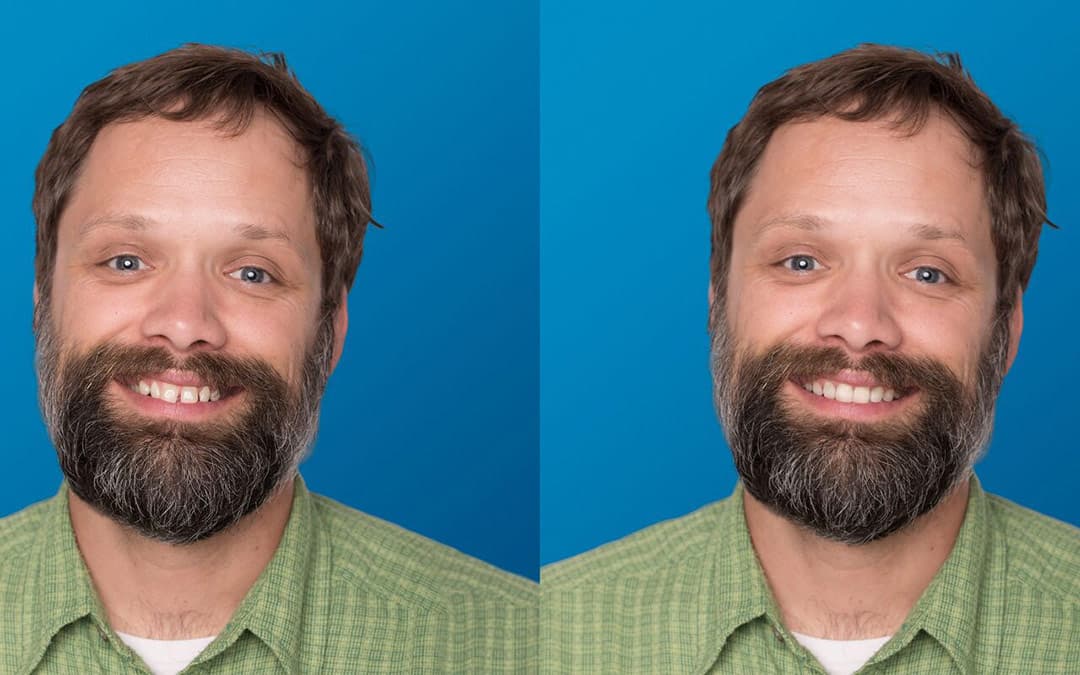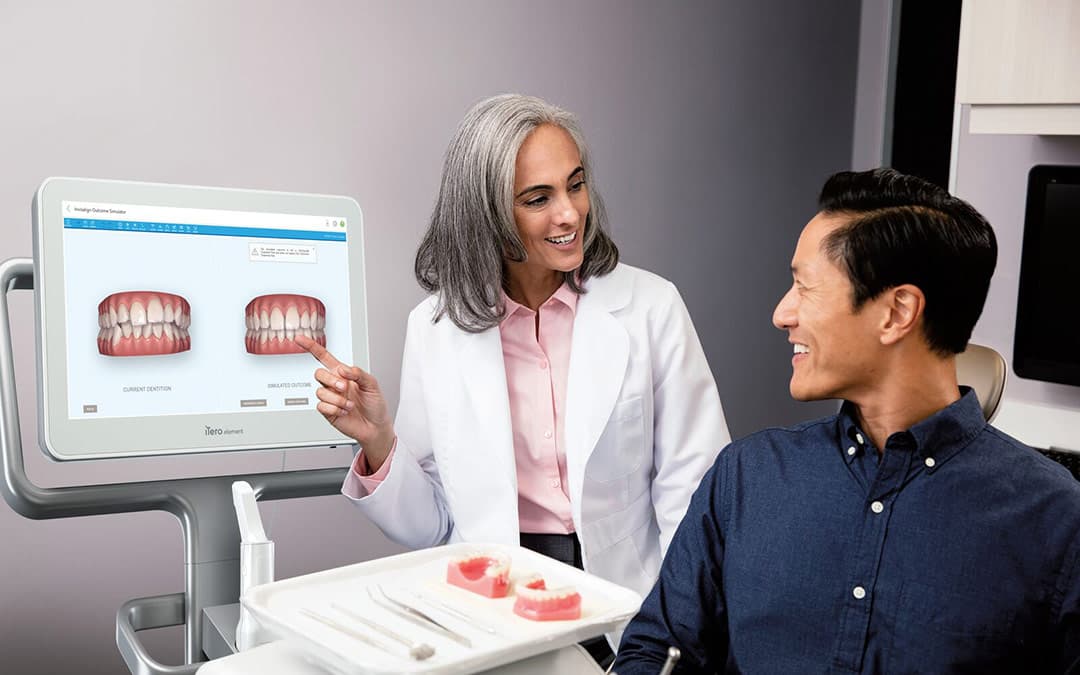Take a look at your teeth. Do they line up correctly when you close your mouth? Your teeth should fit together, with the upper teeth slightly overlapping your lower teeth.1 The points of your molars should fit the grooves of the opposite molar. This helps keep you from biting your cheeks, lips, and tongue.1
Teeth that aren’t lined up properly,1 or teeth that are rotated or twisted2 are signs you might have misaligned teeth; a condition orthodontists call malocclusion. Malocclusion is one of the most common dental problems.3 These are some of the most well-known signs, but they aren’t the only ones. Other possible indicators of misaligned teeth include pain or difficulty when chewing,3 speech difficulties, mouth breathing, and inability to bite into food correctly.3
If you suspect your teeth aren’t lining up properly you should talk to your dentist, orthodontist, or dental health professional. They can review your situation, let you know if you need treatment, and work with you to come up with a treatment plan that fits your lifestyle.
There are three categories of misalignments (malocclusion)
When your teeth are misaligned, they usually fall into one of three categories:
Class 1 – this is where your bite is normal, but there is some overlap of your lower teeth by your upper teeth.4 This is the most common category.3
Class 2 – this is where your upper jaw and teeth severely overlap the bottom ones.4
Class 3 – here, your lower jaw and teeth overlap your upper teeth. In some cases, your lower jaw or teeth may jut forward.4
Why are my teeth misaligned?
If your teeth are misaligned, you might need to blame your parents. That’s because misalignment is often hereditary.1 Inherited traits like the size and shape of our jaws can have a profound impact on the alignment of our teeth.5 Birth defects can also cause misalignment.6
Sometimes the problem isn’t our parents, but evolution. Some scientists say that as we transitioned from hunter-gathers, our jaw bones underwent a series of complex changes.7 Our jaws became smaller over time, making it a tighter fit for our teeth.8
Poor habits can knock teeth out of alignment
Our habits and behaviors can also cause our teeth to not line up correctly. Childhood habits like thumb sucking, tongue thrusting, using a pacifier after age three, or prolonged bottle usage can all lead to alignment issues as children get older.1
Poor nutrition, hygiene and oral habits are associated with misaligned teeth.9 They can also lead to tooth decay and poor dental development, which can be precursors of misalignment.10
Injury and illness can also lead to misaligned teeth
Sometimes, teeth can be misaligned despite good habits and a lack of genetic issues. Illness and injury can cause damage to our mouth that can cause our teeth to not line up correctly. Facial injuries, particularly jaw fractures, often cause misalignment.6,10,1 Tumors of the mouth and jaw can also cause our teeth to fall out of alignment.1
Do our teeth get more crooked with age?
Our teeth can get more crooked as we age because our teeth can naturally shift as we get older.11 Some alignment issues, such as overcrowding, are more common in older patients.10 As we get older, issues like gum disease – potential precursor to alignment issues10 - can become more prevalent.12
Do I have to fix misaligned teeth?
You don’t necessarily have to fix your misaligned teeth. For many people, not having perfectly aligned teeth can be seen as something that makes them unique.10 You should speak to your dentist, orthodontist, or other dental health professional before deciding whether or not to straighten your teeth.
Severely misaligned teeth can cause significant problems
Left untreated, misaligned teeth or jaws can cause problems that affect how you eat, drink, speak, or how you feel about yourself.4 They can also impact your health.4
Living with misaligned teeth can be painful
When alignment issues are severe, misaligned teeth can cause you to bite your cheeks, lips, and tongue, which can be painful.4,2
Misaligned teeth can hurt your oral and overall health
When your teeth are severely misaligned, it’s easier for bacteria to hide and harder for brushing to reach all the surfaces of your teeth. Over time, this can lead to cavities, tooth decay, and gum disease.3 The health effects of gum disease don’t just impact your mouth. Gum disease is the most common chronic inflammatory condition in the world.13 It’s linked to a variety of illnesses including heart disease, diabetes, respiratory disease, osteoporosis, Alzheimer’s disease and rheumatoid arthritis.10
The issues caused by misaligned teeth aren’t just physical
Alignment issues with your teeth can cause people to feel self-conscious, less confident, and less attractive.4 Children with misalignments can be more likely to be teased, especially if it impacts how they speak. Misaligned teeth can affect how people interact with the world around them; people with misaligned teeth may smile less often and avoid social situations10 if they are self-conscious about the misalignment.
Do misaligned teeth cause TMJ disorders?
TMJ disorders are issues with the hinge that connects your jaw to the skull. These disorders can cause pain in your jaw joint and the muscles that move your jaw.4 Misaligned teeth can cause TMJ disorders.
Can misaligned teeth be fixed?
Only your dental health professional can say for certain, but fortunately, most cases of misaligned teeth can be fixed.4 Misaligned teeth and jaws are usually fixed by an orthodontist.4 Your dentist will likely refer you to an orthodontist if they suspect the alignment of your teeth needs to be treated. If you’re concerned about your misaligned teeth but your dentist hasn’t given you a referral, make it a point to ask them about it at your next regularly scheduled visit. You can also reach out to your local orthodontist and request a consultation.
See a sneak peek of your straighter smile
The Invisalign SmileView™ can simulate your new smile and give you a view into the future of what it may look like, once your misaligned teeth are corrected. Visit the Invisalign SmileView page or download the My Invisalign™ app to get started.




